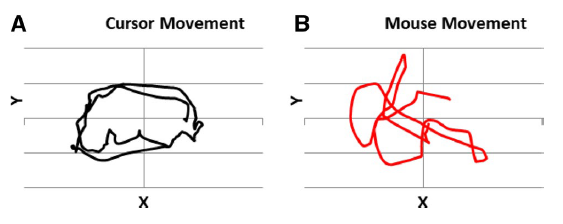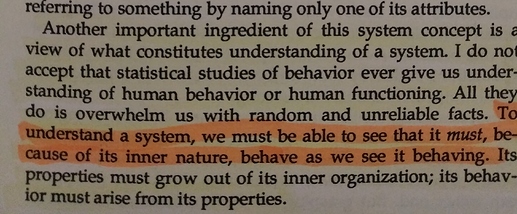RM: Assuming h() is a multiplier of 1 doesn’t make h() a multiplier of 1. Bill’s analysis is based on the fact that the independent variable in an experiment, qd, is what the experimenter sees as the cause of the behavior. So you correctly state that what psychologists think they are seeing is qo = F(qd), since experimental psychologists implicitly assume that h() is a multiplier of 1.0. But what that are really seeing (if the system under study is a control system) is qo = G^-1 [h(qd)] not qo = G^-1(qd).
Agreed.
RM: And that fact is captured by writing what they actually see as qo = G^-1 [h(qd)] . Your introduction of the variable qe just confuses things.
It might be confusing to some people, but it is still correct to just replace the output of a function with a name. The only reason for introducing it was to simplify the equations describing the solution for Z and N systems, and to show how there is only one difference.
Those equations in the paper contained also the qi* and H, so “hiding” them really simplifies things and makes the comparison easier.
RM: I take it that you mean the “succeeding part” that you quoted as what is complete nonsense. Would it be less nonsensical if I had said: When the organism under study is an N-System the form of the dependence of qo (DV) on qd (IV), which appears to reveal something about the organism under study , actually reflects only properties of the local environment . Maybe it sounds less nonsensical when Bill says it;-)
[…]
Of course, when you have identified a controlled variable there will be S-R relationships between disturbances to that variable and system outputs that compensate for those disturbances. But these S-R relationships are only of incidental interest
The nonsensical part is saying or implying that in PCT we are not observing stimulus-response relationships. We are. A lack of effect is a relationship. A zero correlation. There will always be an SR relationship whenever you measure it, but it will not always be a function. I agree with your logic here, just not with the expressions.
RM: I think I’ll just stick with describing the research as testing for controlled variables and leave the S-R out of it.
Great.
RM: So you’re complaint is about me calling the power law a behavioral illusion? What do you think it is?
My complaint (in this thread, anyway) is that you did not define the behavioral illusion as the 1978 paper defines it, and for some reason still quoted the 1978 paper as reference for the term. You have redefined the term into a very different phenomenon, not consistent with the original definition.
RM: Some of these are not side effects, from my point of view. A side effect is an observed aspect of the behavior of a control system that has nothing to do with its operation; it’s something you don’t have to put into a model of the control system in order to produce the observed behavior. Behavioral illusions are side effects of control in that sense. The fact that the observed relationship between qd and qo is the inverse of the feedback function (the S-R behavioral illusion described in the 1978 paper) is a side effect of control in this sense. Same for the power law;you don’t have to put anything into the control model to make the power law appear.
I don’t see it. More examples of your definition of side effects, please.
Observed relationship between qd and qo being determined by the G^-1 is - I think - the main effect of feedback, it is the same effect that makes qd and qf equal, and the same effect that makes qi equal to qi* or zero.
I think that before finding the controlled variable, all effects are hypothetically main effects or side effects. My hypothesis is that the power law is a side effect of controlling something like the shape of drawing and the rhythm or average velocity, and also depends on the properties of the system, because different systems will show the power law at different speeds. Also depends on the shape drawn, as different shapes will show different exponents.
The important part being - to classify something as a side effect, first the main effect needs to be found, the controlled variable. If there is no controlled variable found, you can’t claim something is a behavioral illusion, by my definition of side-effects.
But in a way, I do agree with you, the power law does not tell you anything definite about the system until you find the controlled variables. It might be that it is an intended effect, it might be it is not. Proof and demonstration only by models and experiments.


